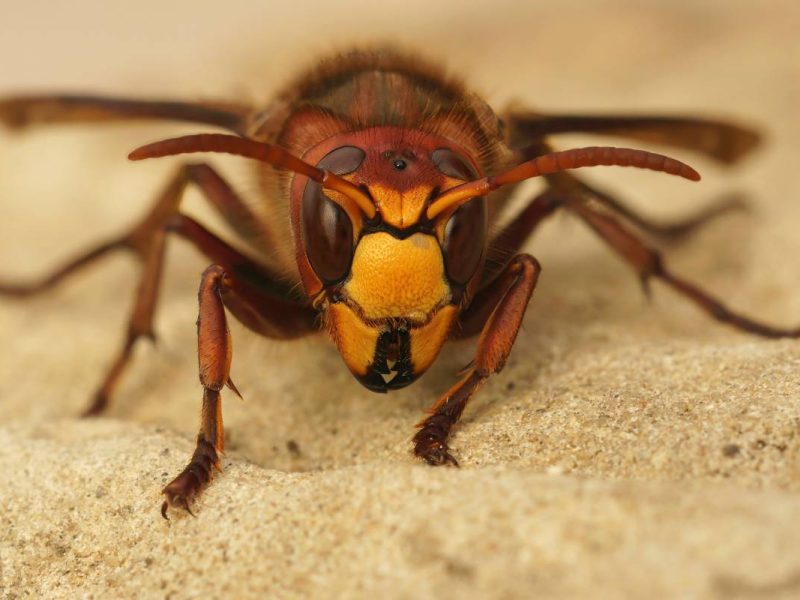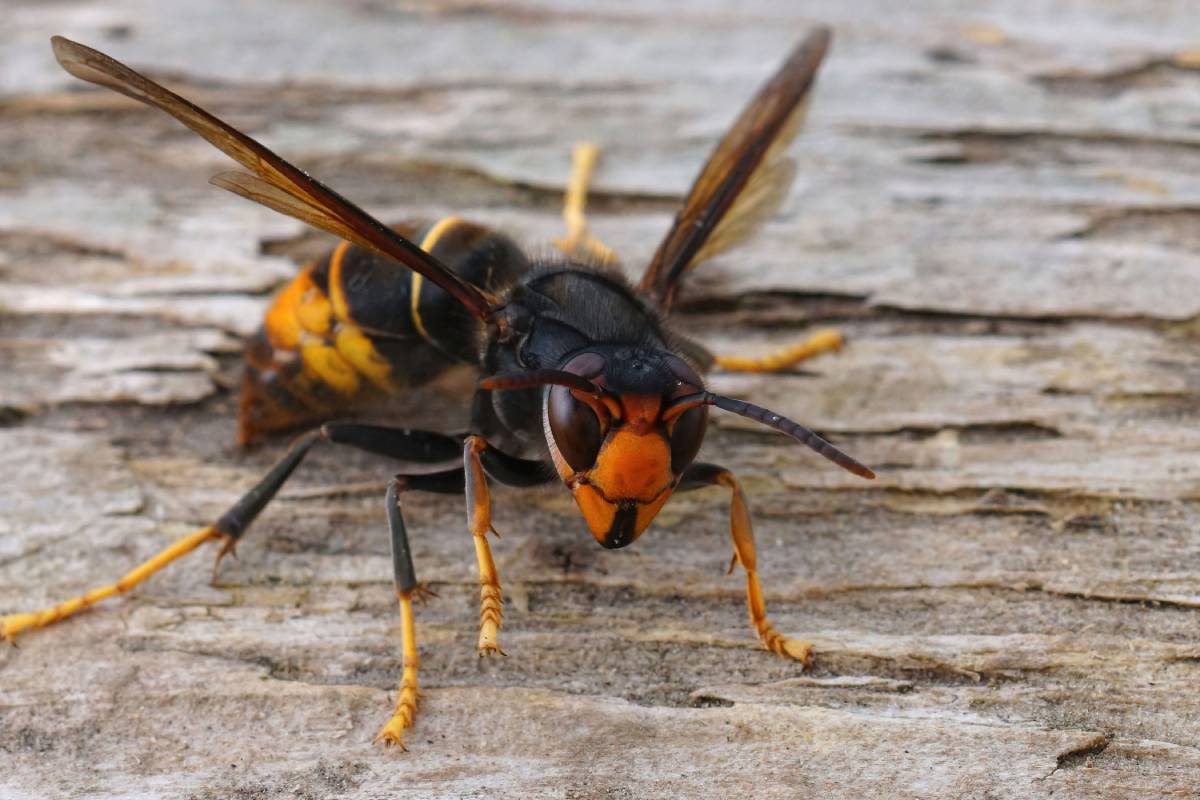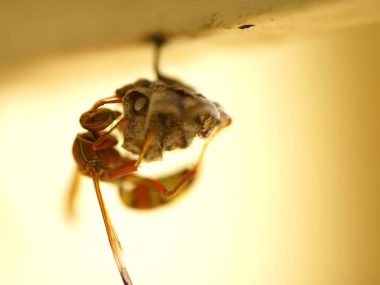Down under in Australia, there’s a big buzz about a big bug—the Australian hornet. This hefty insect, with its eye-catching looks, is more than just a backyard bully. It’s got scientists and nature buffs all stirred up. We’re going to take a trip into the hornet’s hood, check out what makes it tick, and why it’s got some folks worried.
Sure, it might give you the heebie-jeebies, but getting the lowdown on this buzzer is key to living in peace and keeping our ecosystems in check. So, let’s get to know this winged wonder a bit better, shall we?
What exactly is an Australian hornet?
The Australian hornet, scientifically known as Vespa mandarinia, is a large and intimidating insect native to, you guessed it, Australia. Despite its name, it’s not actually a true hornet but rather a type of paper wasp. Don’t let that fool you, though; these guys are still formidable.
Appearance
Picture a creature straight out of a nightmare – that’s the Australian hornet. It’s huge, measuring about 2 inches (5 centimeters) long, with a wingspan that can reach up to 3 inches (7.5 centimeters). Its body is mostly black, with distinct yellow markings on its abdomen. Imagine a sleek, sinister-looking insect with a fearsome presence.
Habitat
You won’t find these hornets in bustling cities or crowded suburbs. They prefer quieter places like forests, woodlands, and even gardens. They build their nests in tree hollows, among rocks, or sometimes even in human-made structures like sheds or attics. Australia’s vast and diverse landscapes provide the perfect playground for these creatures.

Diet
Australian hornets are carnivorous predators, which means they’re not the kind of insects you’d invite to a picnic. They feast on other insects, including beetles, caterpillars, and even other wasps. They’re particularly fond of honeybees, making them a significant threat to bee colonies.
Behaviour
These hornets aren’t ones to pick a fight for no reason, but if provoked, they’ll defend themselves fiercely. They’re not as aggressive as some other hornet species, but they’ll sting repeatedly if they feel threatened. Their sting packs a punch, and for those allergic, it can be quite dangerous.
Impact on Ecosystem
As top predators, Australian hornets play a crucial role in controlling insect populations. However, their appetite for honeybees can pose problems for beekeepers and agriculture. Bee populations are already under threat from various factors, and the presence of these hornets adds another challenge to their survival.
Interaction with Humans
Encounters with Australian hornets are relatively rare for most people. They usually go about their business without bothering humans unless their nests are disturbed. However, it’s essential to be cautious around them and avoid provoking them unnecessarily.
Conservation
Despite their intimidating reputation, Australian hornets are an essential part of Australia’s ecosystem. Efforts to conserve their habitats and ensure the health of insect populations indirectly benefit these creatures as well. Education about their role in the environment can also help foster appreciation and understanding.
Is the Australian hornet harmful to humans and the ecosystem?
The Australian hornet, like many insects, can pose some risks to both humans and the ecosystem, but the extent of its harm depends on various factors.
Harm to Humans
- Stings: Australian hornets can sting humans if they feel threatened or if their nest is disturbed. While their venom is potent and their sting can be painful, the severity of the reaction varies from person to person. For those who are allergic, a sting can lead to more severe reactions, including anaphylaxis, which can be life-threatening.
- Fear and Anxiety: Even for those without allergies, encounters with Australian hornets can be frightening due to their intimidating size and appearance. Fear of being stung can lead to anxiety, especially for individuals who live in areas where these hornets are common.
Harm to Ecosystem
- Predation on Honeybees: Australian hornets are known to prey on honeybees, which can have significant implications for bee populations and the pollination services they provide. Beekeepers may suffer losses if their hives are targeted by these hornets, potentially impacting agricultural productivity and biodiversity.
- Impact on Other Insects: As carnivorous predators, Australian hornets play a role in controlling populations of other insects, including pests like caterpillars and beetles. While this can be beneficial in some cases, their predation on beneficial insects like honeybees can disrupt ecosystems and agricultural systems.
So, Aussie hornets? Yeah, they can be a bit of a pain for us and the environment. But they’re also part of nature’s crew, keeping things balanced. The trick is to chill with the hornets without ruffling their feathers—like, don’t mess with their homes and look out for our bee buddies. Doing this, we can all get along just fine, with fewer stings and more harmony.
Should I get rid of the Australian hornet?
How to get rid of them?
Since they are a type of wasp, if you spot any wasp activity around your home, it’s crucial to address the issue promptly to prevent the nest from growing larger. Wasps can become aggressive if their nest is disturbed, so seeking assistance from a professional with the right training and equipment is the safest option for dealing with a wasp nest in Australia.
The first step in removing a wasp nest is to locate its whereabouts. An outdoor pest control expert can relocate accessible nests or destroy those that are in hard-to-reach places.
There are several methods for eliminating wasps from your property and removing their nests. Insecticides are commonly used for control, but if the nest is small, you can also try non-chemical approaches like homemade traps or natural remedies.
For minor wasp issues, you can make a natural spray by mixing one cup of white vinegar with one cup of water in a spray bottle. Additionally, DIY traps using household items can be effective. Here’s a simple method:
- Cut a 2-litre plastic bottle in half above the label.
- Place ripe fruit, raw meat, or other bait in the bottom half of the bottle.
- Invert the top half and place it inside the bottom half like a funnel, with the cap removed.
- Secure the two halves together and position the trap where wasps are active.
- Once the trap is full, freeze it to immobilize the wasps before disposing of the contents.
Peppermint scents can also serve as a natural deterrent, and creating fake nests using paper bags filled with plastic bags can trick wasps into relocating.
By taking swift and appropriate action, you can safely manage wasp infestations around your home while minimizing risks to yourself and the environment.
Final thought
Nature’s like a big, complex puzzle where every piece matters, and that includes the Aussie hornet. It’s a bit of a tough customer, sure, but it’s got its place in the grand scheme of things. As we go about our lives, it’s pretty important to give these critters the space and respect they need.
Get to know how they roll, steer clear of trouble, and manage things smartly. That way, we keep ourselves safe and the environment humming along nicely. It’s all about living together without stepping on each other’s toes. After all, every creature, hornets included, is part of the awesome tapestry that makes our planet rock.








